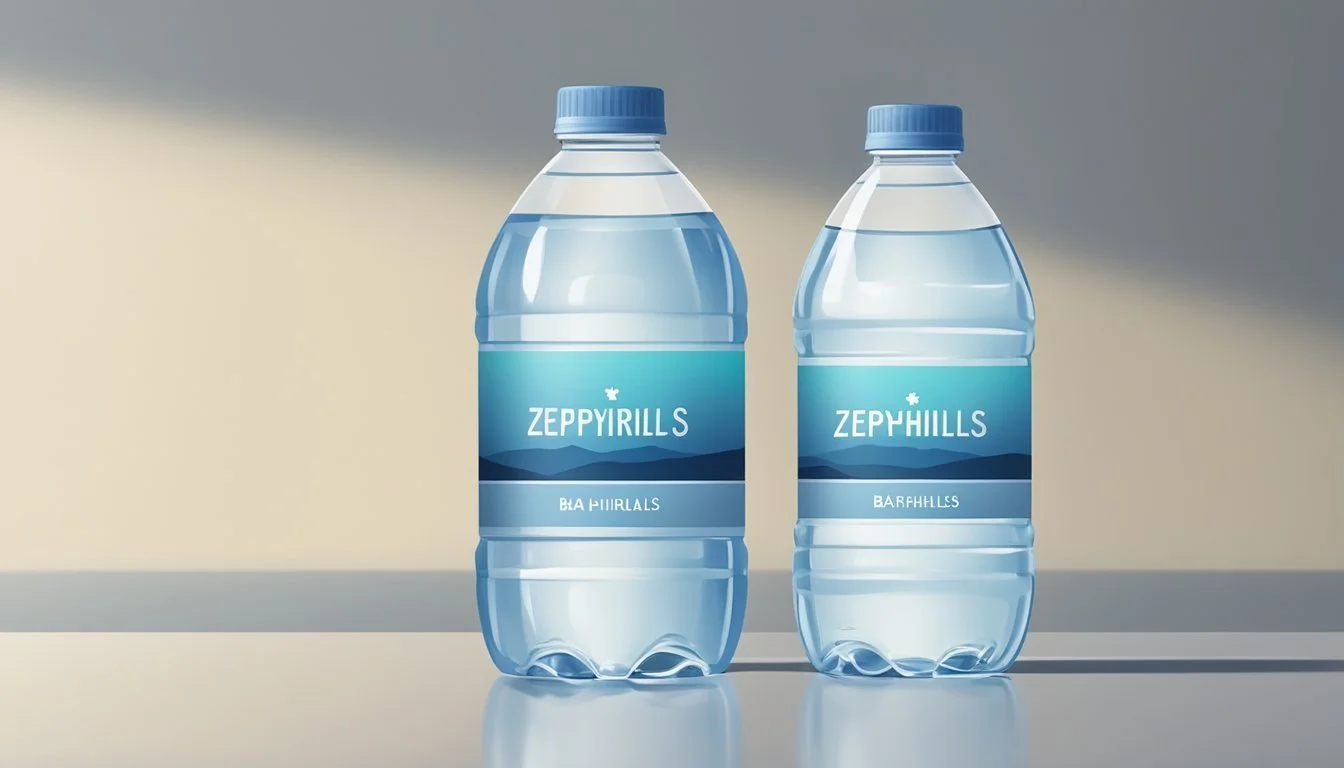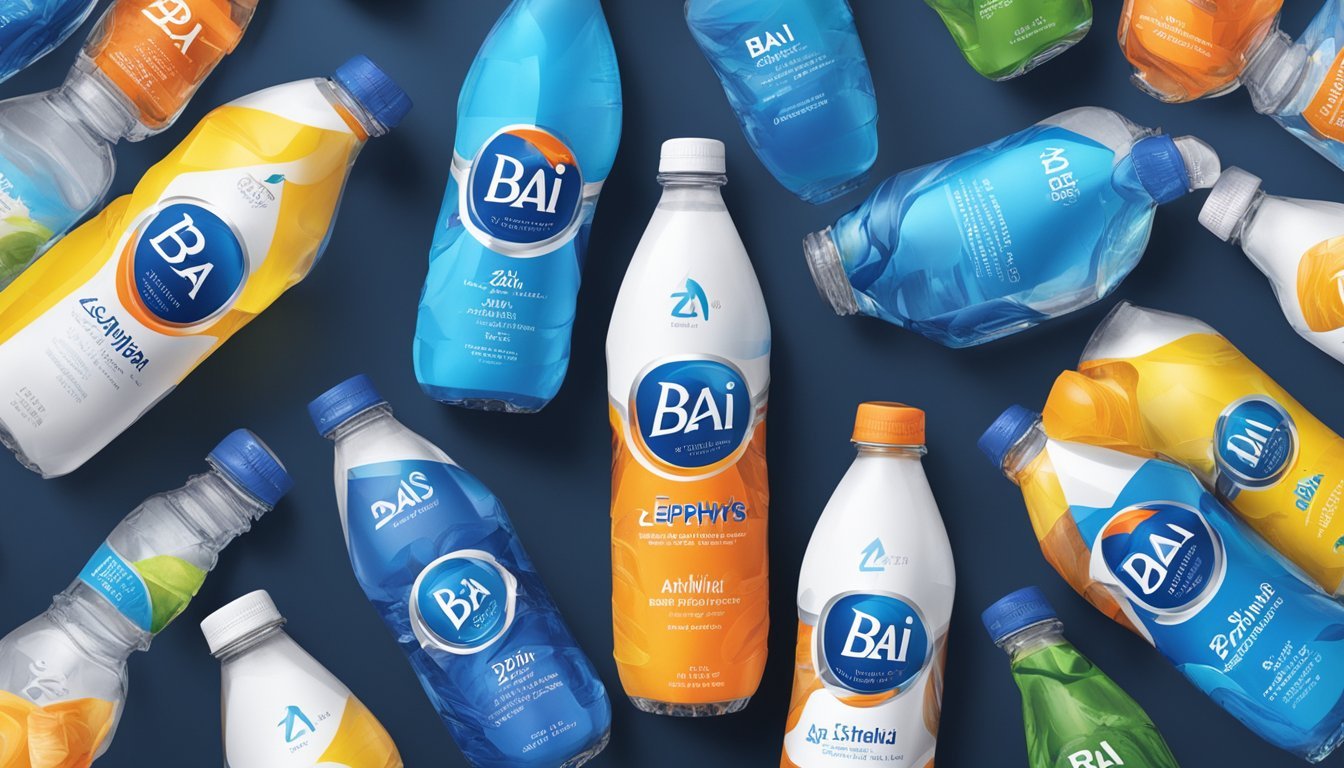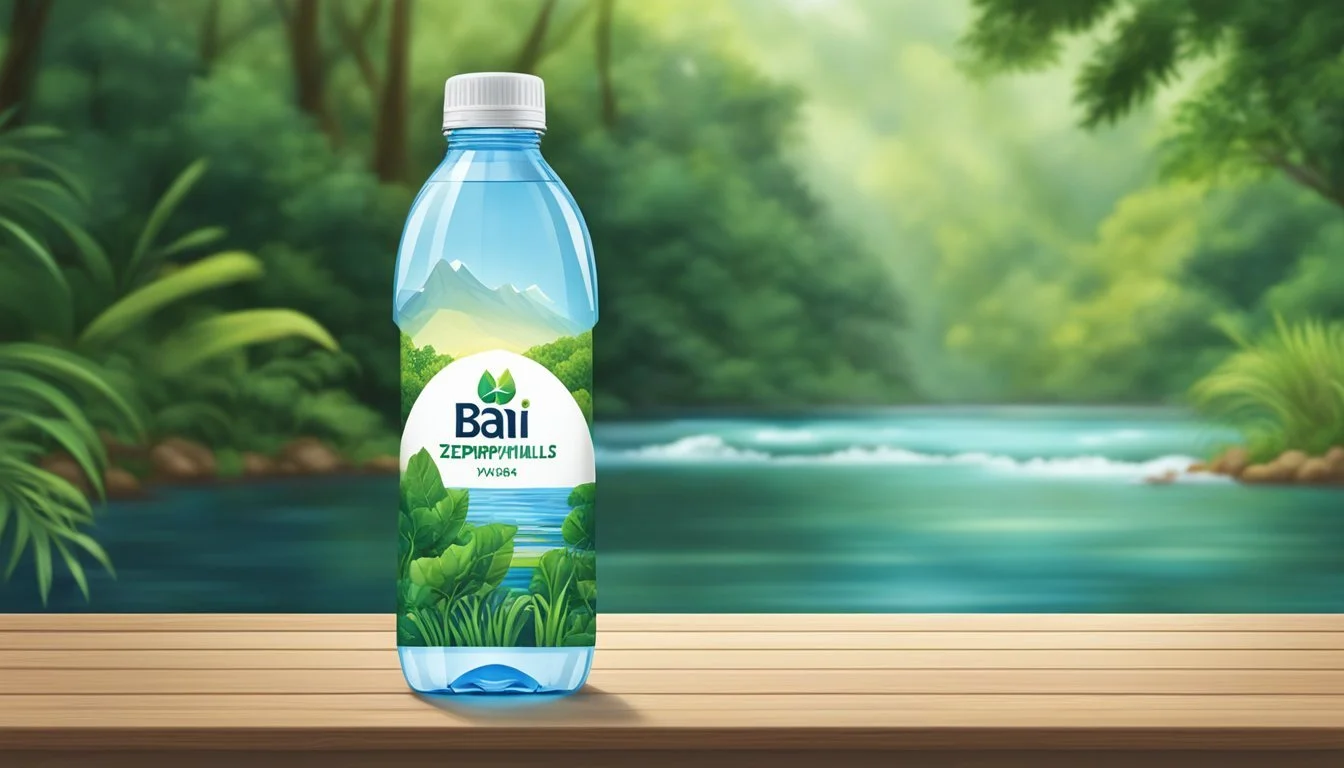Bai vs. Zephyrhills
Comparing Quality and Taste in Bottled Water Brands
In the bottled water market, consumers are faced with a plethora of options, each claiming to offer the best hydration experience. Two brands that often come up in discussions about water quality and taste are Bai and Zephyrhills. Bai, known for infusing its water with antioxidants from coffee fruit, caters to a health-conscious consumer base. Zephyrhills, on the other hand, sources water from Florida's springs and appeals to those who prefer natural spring water.
The choice between Bai and Zephyrhills not only reflects personal taste preferences but also presents an opportunity to compare two different approaches to bottled water. Bai emphasizes added health benefits with its inclusion of antioxidants and various flavors, aiming to offer a more functional beverage. Zephyrhills focuses on providing a natural and unaltered product, emphasizing the purity of the source. Each brand's philosophy shapes the experience of the consumer, from the first sip to the last.
The Essentials of Bottled Water
When selecting bottled water, consumers are faced with various types which differ in source and treatment. Understanding these distinctions is key to making an informed choice.
Defining Bottled Water Types
Bottled water generally falls into several categories, each defined by its origin and processing methods.
Spring water comes from a natural spring, which means that it is collected from where water flows naturally to the earth's surface.
Mountain spring water is a type of spring water specifically collected from springs located in mountainous regions, often prized for its taste and mineral content.
Natural spring water emphasizes that the source is an accredited natural spring without artificial aid in the water extraction.
These waters contain various minerals that can contribute not only to their taste but also to their nutritional profile. The presence of minerals like calcium, magnesium, and potassium can affect both health benefits and flavor nuances.
Beyond sources, treatment is a pivotal factor. Two common processes include:
Reverse osmosis, where water is purified by pushing it through a semi-permeable membrane to remove impurities.
Filtration process, which may involve several stages, including carbon and micron filtering to remove particles and contaminants.
Each type of bottled water offers its unique characteristics, and consumers may choose based on preferences for taste or specific benefits associated with natural minerals.
Analyzing Major Brands
The focus here lies squarely on the distinct profiles of Bai and Zephyrhills bottled water, while also setting them against the landscape dominated by other well-established brands to discern their market position and offering.
Overview of Bai and Zephyrhills
Bai: Bai Antioxidant Water prides itself on offering an electrolyte-enhanced water with added antioxidants. It stands out by infusing its water with the antioxidant mineral selenium and positioning itself as a healthy lifestyle brand.
Zephyrhills: Sourced from Florida springs, Zephyrhills is known for its natural spring water that promises a fresh and pure taste. It has built a strong regional brand, particularly in the southeastern United States.
Comparing to Other Popular Brands
When considering Bai and Zephyrhills in the broader context, it's helpful to understand how they stack up against giants like Nestlé and Coca-Cola's offerings:
Nestlé Pure Life: Jug-bottled and tap-sourced with added minerals, Nestlé Pure Life is a commonly available brand that offers reliable quality.
Aquafina (PepsiCo): Known for its rigorous purification system, Aquafina delivers a clean, crisp taste and is a heavyweight in the market.
Dasani (Coca-Cola): A widely distributed brand that infuses its water with minerals for a distinctive taste, Dasani is also notable for its nationwide availability.
Moving towards more premium selections:
Fiji: Sourced from an aquifer in Fiji, this brand is distinguished by its smooth taste and iconic square bottle.
Evian: Originating from the French Alps, Evian's naturally occurring electrolyte composition appeals to those who favor water from mountain sources.
Voss: With its sleek packaging and artesian source, Voss is often linked with high-end venues and events.
Key specialty water brands also offer different taste profiles and benefits:
Smartwater (Coca-Cola): Vapor-distilled for purity with added electrolytes, Smartwater has a clean taste that aligns with an active lifestyle.
Essentia: Known for its high pH level, Essentia advertises its water as ionized alkaline, catering to those seeking potential hydrating and replenishing benefits.
Icelandic Glacial: Capturing the purity of Iceland's natural resources, this brand is celebrated for its clean, low mineral content water.
For customers inclined towards brands with an ecological focus:
Just Water: Packaging water in paper-based cartons, Just Water emphasizes sustainability as much as quality.
Core Hydration: Another brand professing perfectly balanced water to match your body's natural pH.
Bai and Zephyrhills both contribute uniquely to the crowded bottled water market — Bai with its antioxidant-rich composition and Zephyrhills with its natural spring source. They occupy distinctive niches amidst a variety of brands offering everything from mineral-enriched to sustainably packaged drinking water.
Health and Hydration
When exploring bottled water options such as Bai and Zephyrhills, understanding their contributions to health and hydration is crucial. This section breaks down the benefits of hydration and the roles that electrolytes and pH levels play in bodily functions.
Benefits of Hydration
Hydration is vital for maintaining health, as water is a fundamental component of all bodily processes. Drinking water, whether it's Bai or Zephyrhills, can aid in various functions such as temperature regulation, nutrient transportation, and waste elimination. Proper hydration can prevent dehydration-related health issues, including kidney stones and urinary tract infections.
Regulates body temperature: Maintains stable body heat during temperature fluctuations.
Facilitates waste removal: Aids kidneys in filtering out toxins.
Improves physical performance: Prevents fatigue and enhances endurance.
Supports cognitive functions: Boosts concentration and reaction times.
Role of Electrolytes and pH Levels
The presence of electrolytes in water like Bai and Zephyrhills enhances hydration because electrolytes are responsible for regulating nerve and muscle function, hydrating the body, balancing blood acidity and pressure, and helping rebuild damaged tissue. The pH level, measured on a scale from 0 to 14, determines the acidity or alkalinity of water. A pH level of 7.0 is considered neutral, below 7.0 is acidic, and above 7.0 is alkaline. Waters with alkaline pH levels may be associated with neutralizing acidity in the bloodstream, which leads to increased oxygen levels and improved metabolism.
Electrolytes: Include sodium, potassium, chloride, and magnesium.
pH levels: Standard drinking water usually has a pH of about 7.0, while some bottled waters can be more acidic or more alkaline.
Alkaline water: Some believe it can help in neutralizing the acid in the body.
By considering the electrolyte content and pH level of bottled water brands like Bai and Zephyrhills, consumers can make informed decisions about their drinking water and its potential health benefits.
Water Quality and Safety
When it comes to bottled water, consumers often prioritize water quality and safety. They are particularly concerned about the water's source, its potential contaminants, and how effectively it has been filtered to remove impurities.
Identifying Contaminants
Bai and Zephyrhills both assert their water undergoes rigorous testing to ensure it meets health standards. Consumers often worry about contaminants like lead, heavy metals, arsenic, BPA, and PFAS chemicals. Bai's water sourcing isn't publicly documented in detail, which makes it challenging to pinpoint potential groundwater-based contaminants. However, the brand emphasizes the use of reverse osmosis and other filtration methods. In contrast, Zephyrhills is known to source water from Florida springs and promises a sharp focus on quality control with regular monitoring for substances like lead, heavy metals, and arsenic.
Understanding the Filtration Process
The filtration process is fundamental in ensuring water safety. Bai utilizes purification methods such as advanced filtration, ultraviolet exposure, and reverse osmosis to remove impurities. These processes are designed to eliminate heavy metals, chemicals, and other contaminants effectively. Zephyrhills, on the other hand, relies on a multi-step filtration process that includes micron filtration and ozonation, offering a substantial barrier against contaminants. Both brands aim to adhere to FDA regulations, ensuring that BPA — a harmful chemical found in some plastics — is not present in the bottles, thus preventing leaching into the water.
Taste Profile
In evaluating the taste profile of Bai and Zephyrhills bottled waters, one must consider how the source and ingredients influence the flavor.
The Impact of Sources on Taste
Zephyrhills natural water is sourced from springs in Florida, which contributes to its fresh and clean taste often described by consumers. Minerals naturally occurring in the spring water can impart a subtle taste that is generally well-received. The taste is often considered neutral with no metallic overtones, characteristic of pure spring water.
Bai water, on the other hand, infuses their water with antioxidants and a variety of fruit flavors, including lemon. While not sourced from a specific spring like Zephyrhills, Bai's water undergoes a purification process designed to remove impurities and maintain a consistent taste.
Influence of Ingredients on Flavor
Bai water stands out because it not only hydrates but also provides a sweet flavor without high-calorie counts. They achieve this by adding natural sweeteners like erythritol and stevia leaf extract. These ingredients contribute to a taste profile that is more flavorful than plain bottled water and can include tropical or citrus notes, depending on the specific product.
Bai: Fruit-infused flavors, uses sweeteners such as erythritol and stevia
Zephyrhills: No artificial flavors, natural minerals may provide a slight taste
While Bai has a variety of flavors, including options like Brasilia Blueberry and Malawi Mango, Zephyrhills' taste is usually consistent and reflects its natural source without the addition of flavors or sweeteners. Those who prefer a hint of sodium may enjoy Bai's varieties, which might have small amounts added for taste enhancement.
Environmental Impact
When comparing Bai and Zephyrhills bottled water, the environmental impact primarily centers on the materials used for packaging and the sustainability of these practices.
Plastic Bottles and Sustainability
Plastic bottles are the standard packaging for many bottled water brands, including Zephyrhills. They pose significant environmental concerns due to their non-biodegradable nature and the energy-intensive production process. The use of plastic bottles necessitates a large amount of natural resources, with the production process also contributing to greenhouse gas emissions. Moreover, the disposal of these single-use bottles often leads to environmental pollution if not recycled properly.
Sustainability efforts include initiatives to reduce the carbon footprint associated with bottle production and promoting higher rates of recycling.
Bai beverages typically come in PET plastic bottles, which are 100% recyclable.
Zephyrhills, as part of a larger company, has been working on eco-friendly packaging solutions to minimize their environmental impact.
Emergence of Eco-friendly Packaging
The bottled water industry is seeing a shift towards more eco-friendly packaging options to address environmental concerns. Brands are exploring the use of boxed water and biodegradable materials as alternatives to traditional plastic bottles. Boxed water packages, for instance, tend to have a lower carbon footprint compared to plastic bottles.
Natural water brands often market their commitment to sustainability by employing eco-friendly packaging.
Packaging innovations include the use of reverse osmosis in water purification, reducing the need for plastic bottles by offering consumers water purification systems for in-home use, which is both economical and environmentally friendly.
Companies are constantly analyzing materials and design to reduce the environmental impact, while ensuring that water preservation and delivery methods remain effective and safe for consumers.
Additional Features
When examining Bai and Zephyrhills bottled waters, it's essential to consider the unique attributes each brand offers beyond hydration. These include special additives and the water's contribution to diet and nutrition.
Special Additives in Bottled Water
Bai takes a distinctive approach by infusing its water with antioxidants and flavors derived from the coffee fruit. This addition aims to deliver benefits beyond mere hydration. Each bottle typically contains no added sugar, indicating a preference for natural sweetness. Instead, Bai uses erythritol and stevia as sweeteners to maintain a low-calorie profile.
Sugar Content: Bai - Zero added sugar
Calories: Bai - Most offerings are zero calories
Flavors: Bai - A variety of fruit-infused options
Zephyrhills, in contrast, focuses on delivering pure spring water without any special additives. The brand prides itself on the natural mineral composition of its water, ensuring a clean and refreshing taste.
Sugar Content: Zephyrhills - No sugar
Calories: Zephyrhills - Zero calories as it is plain water
Flavors: Zephyrhills - Does not offer flavored options
The Role of Water in Diet and Nutrition
Water is a crucial component of a healthy diet, aiding in digestion, nutrient absorption, and overall physical well-being.
Bai attempts to enrich a person's nutrition by incorporating small amounts of vitamins like Vitamin C. The presence of coffee fruit extract might also contribute to the intake of beneficial nutrients, positioning the brand as a more nutrition-forward choice among bottled waters.
Vitamins: Bai - Contains Vitamin C
Zephyrhills stays true to the pure essence of water, with the belief that nutrition comes not from the water itself but from a well-balanced diet complemented by natural hydration.
Vitamins: Zephyrhills - No added vitamins
Both brands appeal to health-conscious consumers, with Bai providing enhanced water options for those seeking additional nutrients and Zephyrhills offering a straightforward hydration experience.
Consumer Information
When choosing bottled water, consumers often consider the labeling and ingredients list, as well as the brand's reputation. This section provides specific information on Bai and Zephyrhills bottled waters to help make an informed decision.
Labeling and Ingredients List
Bai offers a range of flavored water products that emphasize their low calorie count and added vitamins. Their beverages typically contain a combination of:
Filtered water
Natural flavors
Erythritol (a sugar alcohol)
Stevia (a natural sweetener)
Added vitamins like Vitamin C and Vitamin E
In contrast, Zephyrhills is known for its natural spring water, which boasts a simple composition:
100% natural spring water
It's important to note that Bai products, while low in calories, may contain trace amounts of sugar and artificial sweeteners to enhance taste. Zephyrhills, being pure spring water, does not contain any added sugar, calories, or artificial sweeteners.
Choosing Between Bai and Zephyrhills
Consumers have differing priorities when selecting bottled water. For those seeking flavor with health-conscious ingredients, Bai's beverages offer additional vitamins and are a low-calorie option with various flavors. Bai's use of erythritol and stevia allows for a sweet taste without the caloric impact of traditional sugars, which is a benefit for those monitoring their sugar intake.
Conversely, Zephyrhills may appeal to those looking for unflavored and natural water. With its zero calories and lack of additives, it suits consumers prioritizing natural hydration without concern for taste enhancement or vitamin supplementation.
The pH level of water can also be a decision factor. Bai beverages, due to their added ingredients, may have a different pH compared to Zephyrhills, which is naturally sourced spring water known for having a balanced pH that is close to neutral.
In summary, if a buyer is interested in consuming water with additional flavor and nutrients, Bai would meet their needs. If the preference is for natural water with no additives, Zephyrhills would be the better choice.
Final Thoughts on Bai vs. Zephyrhills
When it comes to bottled water, Bai and Zephyrhills offer unique drinking experiences. This section weighs expert analyses, ranking positioning, and purchasing tips to help readers make an informed decision between the two.
Experts' Opinions
Experts assess bottled water based on source quality, taste, and additional health benefits. Bai Antioxidant Water is noted for the addition of selenium, an antioxidant which may support heart health and immune function. On the other hand, Zephyrhills, a natural spring water, is typically highlighted for its taste and natural mineral content from Florida spring sources.
Worst to Best Ranking
In several rankings of bottled water brands from worst to best, various factors come into play, including purity, taste, and sustainability. While such rankings are subjective, Bai often gets credited for its health benefits, and Zephyrhills for its refreshing taste. However, they face staunch competition from brands like Fiji, Evian, and Icelandic Glacial, which are frequently praised for their quality. Voss and Smartwater also stand out due to their marketing and unique bottle design.
Tips for Selecting Bottled Water
When selecting bottled water, consider the following tips:
Source: Understand the source of the water. Springs, such as those feeding Zephyrhills, offer different minerals compared to purified waters like Bai.
Additional Benefits: Determine if additional health benefits are important. Bai provides antioxidants, setting it apart from many other brands.
Taste Preference: Taste is subjective; some may prefer the clean taste of purified waters, while others lean towards the natural essence of spring waters.
Sustainability: Consider the environmental impact of the water you purchase. Brands like Just Water emphasize eco-friendly packaging.







